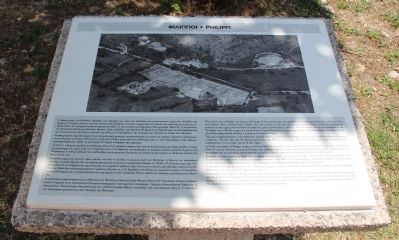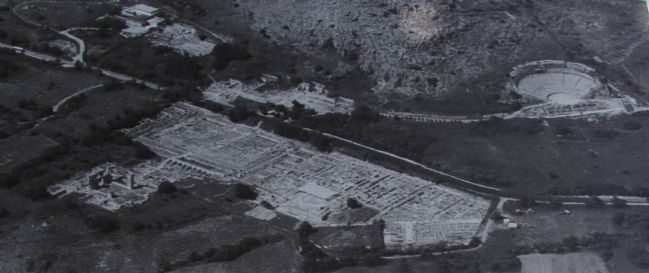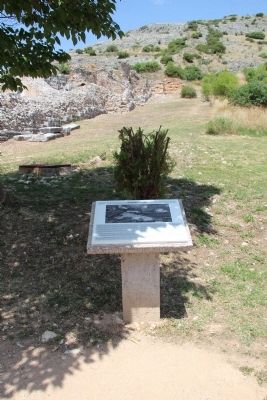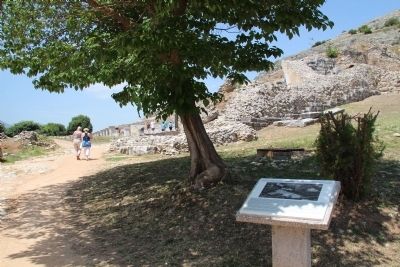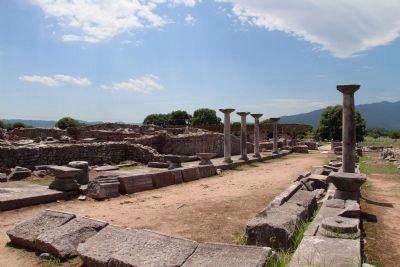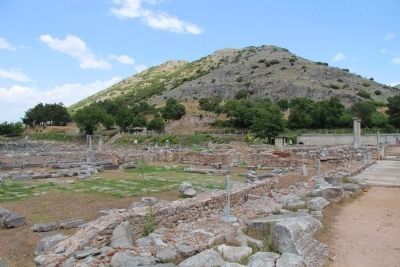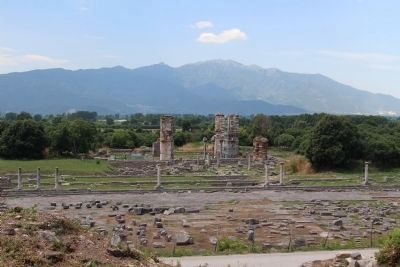Near Filippi in Kavala, Macedonia and Thrace, Greece — Ελλάδα (Southeastern Europe, Balkan Peninsula)
Philippi
The ancient city of Philippi was built on the fringes of the marshes that occupied the south-east part of the plain of Drama. The first settlers were colonists from Thasos who were aware of the rich sources of precious metals, timber, and agricultural products in the region and therefore founded the colony of Krenides in 360 BC. The new colony was soon threatened by the Thracians and in 356 BC sought the aid of Philip II, king of Macedonia. Discerning the economic and strategic importance of the city, Philip captured and fortified it and gave it his name.: Philippi.
The city prospered greatly in the Hellenistic period, when it acquired its fortification walls, theatre, public buildings and private residences. The fact that the Via Egnatia passed through Philippi in the 2nd c. BC made the city much more important and transformed it into a major centre of the region.
In 42 BC, the battle of Philippi, fought on the two low hills outside the west walls of the city, changed its character completely: after his victory, Octavian converted Philippi into a Roman colony (Colonia Augusta Julia Philippensis). The city expanded and developed into an economic, administrative and artistic centre, especially during the 2nd and 3rd centuries AD.
However, another important event was to change the personality of the city once again: the visit of St. Paul the Apostle, who founded the first Christian church on European soil here in AD 49/50. The predomination of the new religion and the transfer of the capital of the Roman Empire to Constantinople lent Philippi considerable luster and reputation.
In the Early Christian period (4th-6th c. AD), the Octagon complex was built on the site of Roman buildings, with the cathedral dedicated to St. Paul and four magnificent basilicas.
Excavations were begun at Philippi by the French School at Athens in 1914. After the Second World War, the Archaeological Service and the Archaeological Society conducted systematic excavations there. At present, the Archaeological Service, the Aristotle University of Thessaloniki and the French School at Athens are continuing the archaeological investigation of the site. The finds from the excavations are housed in the Philippi Museum.
Topics. This historical marker is listed in this topic list: Notable Places. A significant historical year for this entry is 1914.
Location. 41° 0.764′ N, 24° 17.259′ E. Marker is near Filippi, Macedonia and Thrace, in Kavala. Marker can be reached from Agiou Christoforou just west of Filippou, on the right when traveling west. This marker is located in the archaeological park, and is the first marker that one comes
to after leaving the visitor center and beginning the tour of the archaeological park. Touch for map. Marker is in this post office area: Filippi, Macedonia and Thrace 640 03, Greece. Touch for directions.
Other nearby markers. At least 8 other markers are within 14 kilometers of this marker, measured as the crow flies. Ancient Theater (within shouting distance of this marker); Archeological Area Filippi (about 120 meters away, measured in a direct line); Basilica (approx. 0.2 kilometers away); Christian Philippi (approx. 0.3 kilometers away); Annexes to Octagon at Philippi (approx. 0.3 kilometers away); The Octagon at Philippi (approx. 0.3 kilometers away); Black Sea - Silk Road (approx. 11.3 kilometers away); Neapolis-Christoupolis-Kavala (approx. 13.6 kilometers away). Touch for a list and map of all markers in Filippi.
Related markers. Click here for a list of markers that are related to this marker. To better understand the relationship, study each marker in the order shown.
Also see . . . Archaeological site of Philippi - UNESCO World. This is a link to information provided by the United Nations Educational Scientific and Cultural Organization (UNESCO) website. (Submitted on June 27, 2015, by Dale K. Benington of Toledo, Ohio.)
Credits. This page was last revised on March 22, 2022. It was originally submitted on June 27, 2015, by Dale K. Benington of Toledo, Ohio. This page has been viewed 614 times since then and 14 times this year. Photos: 1, 2, 3, 4, 5, 6, 7. submitted on June 27, 2015, by Dale K. Benington of Toledo, Ohio.
